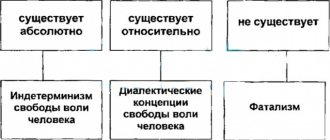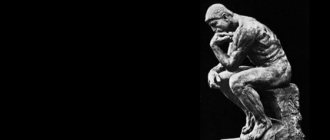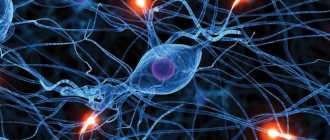Even in elementary school, we become familiar with such concepts as “living nature” and “inanimate nature.” And oddly enough, “wildlife” includes not only animals, but also, for example, plants. Inanimate - earth, stones, water. But how true is this statement?
After all, modern science has long known that water is capable of hearing and not only hearing, but also remembering. Water is capable of absorbing and remembering information. And water over which the word “thank you” is said becomes a medicine, and over which something like “hate” or “die” is said can become real poison. Of course, not so powerful as to kill immediately, but if you drink such water day after day, there will still be an effect on the body. How often do we fight at the table? It's worth thinking about.
Designation of the concept
To begin to understand any topic, it is necessary to identify its concepts. After all, it is often enough just to find out the meaning of the main word in order to understand what will be discussed. So, in this version, a similar term is such a concept as “animism”. Translated from Latin it sounds like “animus”, which means “spirit, soul”. Now we can easily conclude that animism is the belief in various immaterial beings, such as spirits or souls, which can be found in a wide variety of things, phenomena or objects, according to the nuances of the beliefs of certain tribes or societies.
Early theories
Sir Edward Taylor published a book called Primitive Culture in 1871, which described the supposed transition of religion from animism to polytheism and later monotheism. Taylor judged culture by the standards of 19th century Europe and therefore viewed animism as a flawed religious system.
Taylor suggested that the primitive belief system evolved and became more complex over time. The teaching was supplemented by rituals designed to influence deities and demons. Some scholars believe that Taylor may have been too disconnected from cultures with animistic beliefs and did not understand how fundamental their religious beliefs were and how connected they were to the everyday struggle for survival.
The metal that contains the soul
Discussion about animism and primitive societies was common in Taylor's time and led to the emergence of new religious theories such as totemism. The concept of totemism was originally defined as the belief in an animal representing a person's guardian spirit. Some scholars believed that belief in magic and the supernatural predated the development of religion.
The main thing in Taylor's theory
This concept was introduced into science by the philosopher F. Taylor at the end of the 19th century. The very term “animism” was coined by the German scientist G.E. Stahl. Taylor considered this form of belief to be too simple, inherent only to the most ancient tribes. And although it is one of the archaic forms of religion, there was much that was unfair in Taylor's theory. According to him, the beliefs of ancient peoples developed in two directions. First: this is the desire to reflect on dreams, the processes of birth and death, reasoning after various trance states (which were entered thanks to various hallucinogens). Thanks to this, primitive people formed certain thoughts about the existence of souls, which somewhat later developed into thoughts about their relocation, the afterlife, etc. The second direction was due to the fact that ancient people were ready to animate everything around them, to animate it. So, they believed that trees, the sky, everyday objects - all of this also has a soul, wants something and thinks about something, all of this has its own emotions and thoughts. Later, according to Taylor, these beliefs developed into polytheism - belief in the forces of nature, the power of deceased ancestors, and then even into monotheism. The conclusion from Taylor's theory can be drawn as follows: in his opinion, animism is the minimum of religion. And this idea was often taken as a basis by many scientists of various directions. However, for the sake of truth, it must be said that his theory also has weaknesses, as evidenced by ethnographic data (the first religions do not always include animistic beliefs). Modern scientists say that animism is the basis of most existing beliefs and religions today, and elements of animism are inherent in many people.
Animism: examples in ancient cultures
To make it clear, here are a few examples of animism. It is known that in Slavic culture every natural phenomenon corresponded to some kind of god. More precisely, this phenomenon was a manifestation of one or another deity. Thus, the wind was considered an external manifestation of Stribog, the sun was a manifestation of Yarila (the gods Khors and Dazhdbog were also associated with the sun), and Perun and Mother Cheese-Earth were considered the main gods.
Notice how warm the relationship is with the earth. Not to the sky, to which it is now customary to raise one’s hands every time something unpleasant happens (by the way, a very interesting question: why is something pleasant not accompanied by this ritual, but is taken for granted?), but specifically to the earth had such a warm relationship. It's simple: for our ancestors, the source of food was not a supermarket, but the land, which provided everything needed for life, and therefore was equated with the mother.
And every time the help of one or another element was needed, the Slavs turned to one or another god. And you know what's most interesting? Physicists are already saying that thought is material. Many studies already confirm this. So Academician of the Russian Academy of Sciences A.F. Okhatrin proved that thought is a clot of energy capable of influencing reality. Dr. Teutsch from the USA came to the same conclusions at one time. And the dean of Princeton University, R. J. Jahn, argued that the human brain directly influences reality. The founder of wave genetics, P. Goryaev, said the same thing. According to him, a person can easily change reality with his thoughts.
This is interesting
Scientist proved the existence of God
Studying the world around us sooner or later leads a person to the question of whether God exists. If you observe the world around you, you can be convinced that our Universe is completely harmonious - there is always balance in everything. And it is quite obvious that this process is controlled by something that is beyond the usual concepts of the material world.
What does this have to do with animism? The most direct. If many people believe in some kind of god, then it is no longer so important whether he exists or not, because this god, even if he does not exist, appears in the form of a kind of clot of energy thanks to the power of collective unidirectional thinking. And if people believed that they could talk to her before sowing the land and ask her to give the harvest, then it worked.
Animism is also widespread in mythology, and you might think that these are just children's fairy tales, but, as you know, “a fairy tale is a lie, but there is a hint in it.” And our ancestors passed on knowledge about the world order to their descendants through myths and fairy tales. You can read about why you need to read fairy tales to children in our article.
Molfars are mysterious people who are on first terms with nature
One of the manifestations of modern animism are the Carpathian molfars. The Molfars were inhabitants of the Carpathians, who are believed to have supernatural powers, are healers, and bearers of ancient knowledge and culture. The most important thing: they are able to directly influence nature. There is a version that the molfars derive their strength from interaction with the mountains.
It is believed that the silicon structure of the mountains is an excellent conductor between the molfar and the energy-information field of the Earth. Of course, among them there are many “mummers” and charlatans, but there are also those who have truly absorbed the knowledge of their ancestors. For example, one of the Carpathian molfars of our time is Mykhailo Nechai. Already at the age of eight, he demonstrated miracles of harmonious interaction with the world. Mikhail Nechai was so strong that he was recognized even by the party leadership of the USSR, which invited him to the Chervona Ruta festival in 1989 to (quote) “ensure good weather.” And this in a country where any manifestation of mysticism at that time was considered obscurantism.
During his life, the Carpathian molfar Mykhailo Nechai cured many people from diseases that are considered chronic and incurable by modern medicine. Molfar's earthly journey ended in 2011 when he was killed by one of his visitors. Nechai predicted his death in advance, but did not see it as a tragedy. It is foolish for a person who knows that the path of the soul is endless to be afraid of physical death.
About perfume
Knowing that animism is a belief in spirits, it is worth taking a closer look at what Taylor himself said about this. Thus, he believed that this belief is largely based on the sensations that a person experiences during sleep or a special trance. Today this can be compared with those sensations that are inherent in a person, for example, on his deathbed. Man himself exists in two units that are different in nature: the body, the material part, and the soul, the immaterial part. It is precisely the soul that can leave the shell of the body, move from one state to another, migrate, that is, exist after the death of its body. According to Taylor's theory of animism, the soul can do much more than just go to the land of the dead or the afterlife. If desired, she can control living relatives, contact them through certain individuals (for example, shamans) in order to convey messages, participate in various holidays dedicated to dead ancestors, and so on.
Living and inanimate nature
However, let's return to our question: what can be considered alive and what not? Plants that are spoken to kindly grow faster and produce more flowers; Water over which pleasant words are spoken becomes healing. What if it turns out that stones can move? No, not in the back of a KamAZ, but fully, like living beings.
This phenomenon was discovered on the dried-up lake Racetrack Playa in Death Valley. Imagine the bottom of a long-dried lake, along which... stones are moving. No, of course, not at such a speed that it could be seen, but... this is what it looks like:
The stones do not move constantly, but a couple of times a year or less. But traces of movement remain for a long time, and it is through these traces that their movement can be tracked.
And although scientists find explanations for such movements that this is the result of sliding on the surface of ice in winter, there is no doubt that the world around us can manifest itself as a real living organism. Thus, the world around us is alive
. And our ancestors knew about this more than us, but we will talk about this a little later.
Fetishism
It is also worth saying that fetishism, totemism, animism are religions similar in nature, which sometimes arose from each other. Thus, animism could often flow into fetishism. What does it mean? Ancient people also believed that the spirit did not have to move into the same body after the death of the body; it could move into any surrounding object. Fetishism at its core is a belief in the power of surrounding objects (all or certain ones, for example, statues) endowed with a soul. Very often, fetishism flowed from the general belief that everything around is animate into a narrower direction. An example would be the shrines of the ancestors of African tribes or the ancestral tablets of the Chinese, which were worshiped for a long time, believing in their strength and power. Very often, shamans also used fetishes, choosing a special object for this. It was believed that the soul of a shaman moves there when he offers his body to communicate with the spirits of the dead.
Comments and questions
from lat. anima - soul, spirit - an early form of religious beliefs, the spiritualization of natural objects and phenomena, leading to the idea that in the minds of animists the whole world is filled with spiritual beings, not only acting in nature, but also influencing and even settling in human life. Elemental spirits can be both evil and benevolent, so if necessary, small donations are made to them. The attitude of spirits is not fixed and can change depending on the behavior of people.WatchWord Formation. Comes from the Latin anima - soul. Category. Worldview system. Specificity. It is based on the assumption that almost all objects that have any connection with human activity have an individual soul. look
Multi-spiritedness
Having already learned that animism is a belief in spirits, it is also worth saying that some tribes also believed that a person can have several souls that have different purposes and live in different parts of the body: in the top of the head, legs or arms. As for the viability of these souls, it could be varied. Some of them could remain in the grave with the deceased person, others went to the afterlife for further residence there. And some simply moved into the child in order to animate him. An example is the Yakuts, who believe that a man has eight souls, and a woman has seven. In some beliefs, at the birth of a child, parents gave him part of their soul, which again can indicate multi-spiritedness.
Animistic lifestyle
The various animistic subcategories relate to man's primal desire to survive and gain a competitive advantage through communication with spiritual beings. To survive, people needed to eat the meat of animals, even if they considered them sacred.
Animists also expressed their kinship with plant life. In other words, followers of some areas of animism tried, if possible, not to eat certain varieties of plants.
For Europeans during the Age of Discovery, civilization was the ultimate goal. They clearly believed in the superiority of developed society. From their point of view, anything that differed from their ideal was inferior and needed to be changed. But what impact did European civilization have on the “primitive” peoples?
With the modern movement towards harmony with nature and the spiritual world, it seems that we are returning to our “barbarian” origins. But in what case did man really achieve his ideal: in a developed society that exalts narcissism and greed, or earlier - when he tried to live in kinship with all living beings?
Totemism
Totemism is similar in nature to animism. People tended to endow with souls not only the objects around them, but also the animals that lived nearby. However, some tribes believed that all animals have a soul, while others believed that only some, the so-called totem animals, which the given tribe worshiped. As for the souls of animals, it was believed that they also know how to move. An interesting fact was that many believed: the souls of dead people could move not only into a new person, but also into a totem animal. And vice versa. Very often, the totem animal acted as the guardian spirit of a given tribe.
Direction used
Based on his studies of child development, Jean Piaget theorized that children are born with an innate animistic worldview in which they anthropomorphize inanimate objects, and that only later do they grow out of this belief. On the contrary, Margare and Mead, in the course of their ethnographic research, found that children are not born with an animistic worldview, but become accustomed to such beliefs because they are raised by society. With the development of cattle breeding, agriculture and crafts, demons appeared, who were already considered the patrons of the corresponding areas of social practice. Naive A. eventually receives a communal-patrimonial education. In a slave-owning society, where relations between people and society became antagonistic due to developed class relations, a new form of agriculture arose: matter was considered animate, but no longer anthropomorphic; old animistic mythology was transformed into natural philosophy. Elements of A. have been preserved in world religions. However, complex modern
Animatism
Knowing that animism is a belief in the power of spirits, it is necessary to say a few words about such a belief as animatism. This is a belief in a huge faceless force that gives life to everything around us. This could be productivity, human luck, or livestock fertility. We can say with confidence that these beliefs were inherent not only to ancient people, they are still alive today. For example, in India they believe that there are many different spirits that live in the mountains, forests, and fields. Bongs (Indian spirits) can be both good and evil. And in order to calm them down or appease them, even now they bring them various gifts and arrange sacrifice ceremonies.
English dictionary
from lat. anima - soul) - among primitive peoples, belief in the existence of souls and spirits as the causes of natural phenomena, belief in the animality of all nature, the belief on which natural religion is based; in a metaphysical sense, a worldview according to which the soul is elevated to the principle of life. G. E. Stahl (“Theoria medica”, 1737), as well as Paracelsus and Carrino, who reduce life to a soul-like dynamic “spirit” (“Spiritus”), like Aristotle, considered the soul to be the sculptor of the body. Animal – animal related to animals; figuratively connected with the feeding instinct and sexual instinct (“animal needs”). … watchHe explains that animism is a “relational epistemology” and not a Tylorian failure of primitive reasoning. That is, animists identify themselves based on their relationships with others, rather than on the basis of some distinctive personality trait. Instead of focusing on the essentialized modernist self (“the individual”), part of which includes “supermen” (i.e. non-humans).
About nature
Animism is a religion that gives souls to everything around it. For example, the inhabitants of the Andaman Islands believed that natural phenomena and nature itself (sun, sea, wind, moon) had enormous power. However, according to their opinions, such spirits were most often evil and always tried to injure a person. For example, the forest spirit Erem-chaugal is capable of injuring a person or even killing him with invisible arrows, and the evil and ferocious spirit of the sea can strike his person with an incurable disease. However, at the same time, nature spirits were also considered the patrons of individual tribes. So, some considered the sun their patron, others considered the wind, etc. But other spirits also needed to be respected and worshiped, although for a particular village they could be less significant.
Animism - interesting facts
It should be noted that many views characteristic of animism are widely used in various esoteric theories existing in the modern world. Indeed, not only world religions, but also various practices recognize the existence of spirits, the possibility of communication with them and their influence on the material world. The key postulate is the division of the world into physical and spiritual, which, along with primordial animism, is recognized by almost all esoteric schools (the concept of the astral plane, information field, etc.). In the narrow sense, a teaching that explains life through the presence of a soul in every body. Thus, animism is opposed to materialism (which explains life by the existence of inanimate matter) and differs from vitalism (which refuses to explain it at all). Why do we need him?
Many anthropologists stopped using the term animism, finding it too close to early anthropological theory and religious polemics. According to certain criteria, they were identified as “animists,” who were identified as “animists.” So he began to rely on various scientists who began to use the term differently, using it “differently,” “focusing on knowledge about other people, about how to behave towards other people.” As religious scholar Graham Harvey has stated, while the definition of “old animism” is problematic, the term “animism” nevertheless “has considerable value as a critical, academic term for a style of religious and cultural world.” “ANIMISM, -a, m. The religious belief that in every person, animal or plant (in primitive religions also in every thing) there is an independent spirit, soul, and that a person can freely communicate with his spirit, soul. II ave. animistic, -aya, -oe. Cm.
Archaic animism. The transition from demon to deity
Greek mythology. A.A. Tahoe-Godi.
Archaic animism. The transition from demon to deity.
With the gradual strengthening of the clan community, when the appropriation of a finished product is replaced by the activity producing this product, a person no longer just instinctively uses the objects necessary for life, but peers at them, comprehends them, shares them, learns how to use them rationally, creates them himself, demonstrating certain, albeit simple, constructive abilities.
While producing even the most primitive tools, man involuntarily focused on their purpose, structure, and purpose. And such a mental act created the prerequisites for understanding any thing, its component parts, and therefore its decomposition into parts and combination into one whole. If you understand the meaning of a thing and have the ability to separate it, then it is possible to separate the magical power of the demon of this thing, which gives it meaning and life, from the object itself, make the demon live independently of the object , act on it from the outside, without being subject to any damage along with a perishing thing, but maintaining the immutability of its state, not subject to death, immortality.
In this way, pure fetishism enters the animistic path, recognizing the existence of an independent life-giving source for objectively existing being, for any generation of Mother Earth.
Proteids from the island of Samos. Temple of Hera - VI century. BC e.
All nature takes on a transformed appearance. The forests are now full of mysterious invisible creatures that give life to flowers and trees, protecting and protecting them. The same tree maidens live in the forest thickets, but from now on they are not hamadryads, living the same life with the tree and dying with it. Now these are immortal nymphs, directing the life of the plant world from the outside.
Treasures stored in the ground are also under the power of certain mysterious farriers - finger-sized dactyls (Greek dactylos - finger). The fields and meadows are inhabited by shaggy and goat-footed creatures with goat horns - lords, paniskas, satyrs - observing the well-being of the herds. Streams, rivers, lakes, springs, swamps are full of water maidens, always scurrying there, called naiads or nymphs, since the Greek word “nymph” means not only a maiden, but also spring water. Mountain maidens hide in the mountains - oreads (Greek oros - mountain ), guardians of peaks, mountain roads, caves and grottoes; and to these maidens the traveler must sacrifice for his safety.
Mountain maidens - nymphs of the Oreads are characteristically neither immortal nor mortal. They live a long time, feeding on ambrosia , and with the birth of each of them, trees grow on high mountains - pines or oaks, tall, with lush foliage. No one dares to touch the sacred trees, but the hour destined by fate comes, and the trees dry up on the roots, “the bark dies, the green branches fall off.” At the same moment, the souls of the mountain nymphs part with their lives (Gom. hymn. IV 257-272).
The Greeks are a sea people and love the sea, the depths of the sea are inhabited by innumerable bizarre creatures, those that give the sea its changeable color, its salinity; those that create the play of waves, their splashes, whirlpools, speed of movement, foam crests, bottomless depths, sandbanks, rocky shores.
It is worth reading Hesiod's Theogony , where he lists the fifty daughters of Nereus (ancient Greek Νηρεύς) , born in the depths of the sea (240-264), or the children of the Ocean washing the earth (337-370), the number of which reaches three thousand . The names of the Nereids are Kimo ( Wave ), Foya ( Swiftness ), Ferusa ( Wave ), Pontonorrhea (Sea Path Maker), Dynamina (Whirlpool), Okiroya (Swift Current), Kalloroi (Beautiful Current), Glauconoma (Green-Blue), Galia (Salty taste), Psamata (Sandiness) and Petreia (Rockiness of the sea).
Nereid running on the waves. Around 400 BC e. London. British museum
For now, the creatures that have separated from the material body of nature and received a life independent of it are quite vague and unformed, like the elements that they direct and control. At the stage of transition from fetishism to pure animism, archaic mythology does not yet know a thoughtfully designed divine force that has a personal name and its own special divine biography. Before us is a world not of gods, but of demons, who arise unknown how and go unknown where, hidden from a person who cannot even call upon them by name or enter into communication with them.
This demonic force suddenly swoops in, bringing grief to a person, sending ominous dreams , causing unexpected thoughts and actions in him. The demon is involved in the birth of a person (cf. the Latin genius, identical to the Greek demon - a genius inherent from birth ) and his death, an unexpected benefit and the same unexpected misfortune.
In classical mythology, demons, having lost their omnipotence, will become intermediaries between gods and people , but in archaic mythology everything is full of demons - and in them, ancient man comprehends the mystery and mystery of the undivided chaos of life, the dominance of those phenomena that are called random, until an explanation has not yet been found for them. Having taken the path of animism, ancient man could not turn away from it. And the creatures born by Mother Earth received in archaic mythology a life independent of their parent, had their own image and name, and therefore their own destiny.
Next... The Earth and its descendants. Monsters inhabit the earth. Destructive forces.
The earth and its descendants.
The first creations of myths











